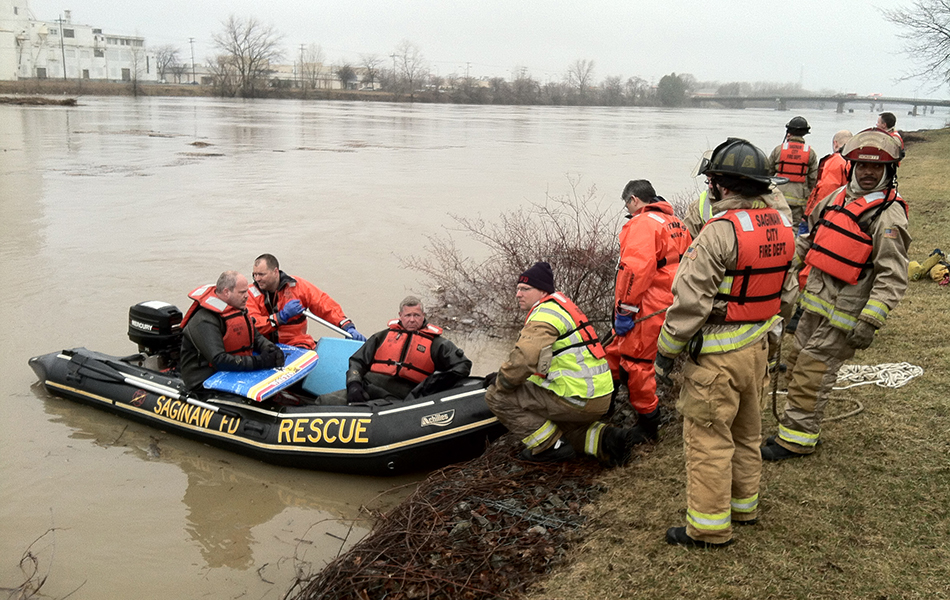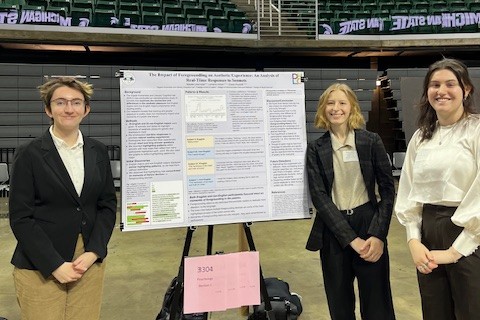CAL Website Preserves Flood History

In September 1986, Michigan experienced one of the worst natural disasters in the state’s history. For three days straight, persistent heavy rain and severe thunderstorms flooded the central lower area of the state, leaving 10 people dead, more than $505 million in total damages (about $1.1 billion by today’s standards), and 22 counties declared as federal disaster areas, with the hardest hit area extending from Alma east across Midland, Saginaw and Bay City to Vassar.
In an effort to collect and preserve stories and images from the Great Flood of 1986, an MSU College of Arts & Letters team worked with MSU Extension and the Michigan Sea Grant to develop a website, 1986flood.com, for people to share their memories of one of the most devastating storms Michigan has ever seen.
“The hope is to have people share their stories of the flood as a way of community memory.”
Kristen Mapes
The website includes a brief history of the 1986 flood, brings together photos and stories from the flood, including photos from Midland and Bay City archives, and has information about flood preparation for the future.

“The goal of the project is to educate people about what happened in 1986, but also to educate them to be prepared for floods in the future,” said Kristen Mapes, Digital Humanities Specialist for the College of Arts & Letters, who served as the project manager for the website development. “The way to get people engaged in the discourse about flood preparation is to have a place where they can share their stories from the past.”
The public is invited to upload their photos and stories from the flood to the website by going to 1986flood.com and clicking the “Share” link at the top of the page. An online form asks that you submit your email address and to tell your story in 150 words or less. Images also can be uploaded.
“The website is for the community and to ideally have them be engaged in it, both to learn about and think about the past, but also the preparation aspect too,” Mapes said. “The hope is to have people share their stories of the flood as a way of community memory.”
“In reality, everybody’s experience, even if it was something that might seem small, is important.”
Kristen Mapes
One of the challenges of the project has been that some people don’ think their story is worth telling.
“In reality, everybody’s experience, even if it was something that might seem small, is important,” Mapes said. “You don’t have to have had a catastrophic experience to be worthy of contributing your story. It could be something very simple, but that you remember.”
Katy Hintzen, the former Sea Grant Extension Educator in Bay County, first contacted the College of Arts & Letters about the project last May.
“Our goal in taking on the project was to have more community relations and to do something in the realm of digital humanities, which is my particular area of focus and why I was interested in taking the lead on this,” Mapes said.
The team started working on the website at the end of July, and the site launched at the beginning of September, a little over a month after work began, as a way to help commemorate the 30th anniversary of the flood.
“It was pretty short term in terms of time spent on the project, but has a lot of really great community long-term rewards,” Mapes said. “The website has been very well received by anyone who has encountered it.”

This past September, the website was presented at two different public events in Midland and Bay City that talked about the history of flooding in the area and preparations for the future. During those events, the College of Arts & Letters team collected oral histories that are now available on the website.
The Great Flood of 1986 website will live online for quite a long time and will continue to gather peoples’ stories and photos from the flood.
“But of course websites don’t live forever, so all of the information that is collected – the images, stories, oral histories and website material – will be deposited at the Bay County Historical Society, where it will be preserved long-term,” Mapes said.
The Bay County Historical Society also plans to establish a rotating exhibit and education program on regional flooding and the historic ties between flooding and land use as a result of this project.
“The exhibit won’t be directly about this project, but it was inspired by the project to have a regular exhibit about flooding,” Mapes said.
The College of Arts & Letters Computing and Technology team is interested in taking on other projects like this in the future as long as they fit within a particular scale.
“We don’t have a huge amount of free student time or our own time to spend on something like this, but we can periodically take on these projects and are able to partner with other areas of MSU,” Mapes said. “Also, this is the type of project that we can use as a model for other things moving forward. Much of the work that we have done could easily be replicated and adapted for future projects.”


